Text
Mastering Pond Maintenance: A Comprehensive Guide to Fixing Pond Liners
Are you grappling with pond liner issues? Don't let leaks and tears dampen your pond experience. Whether you're a seasoned pond enthusiast or just starting out, understanding how to fix pond liners is crucial for maintaining a healthy and vibrant aquatic ecosystem. In this guide, we'll delve into the nitty-gritty of pond liner repair, ensuring your water feature remains a source of joy and tranquility.
Identifying the Problem:
Before diving into repairs, it's essential to diagnose the issue accurately. Common problems include leaks, tears, and deterioration. Keep an eye out for water loss, unusual wrinkles, or visible damage to the pond liner. Once you've pinpointed the problem areas, it's time to take action.
Choosing the Right Materials:
For durable and long-lasting repairs, opt for high-quality materials like EPDM pond liner patches or coatings. EPDM (ethylene propylene diene monomer) pond liners are renowned for their resilience and flexibility, making them ideal for various pond sizes and shapes. Investing in the best pond liner materials ensures a robust and reliable fix, giving you peace of mind for years to come.
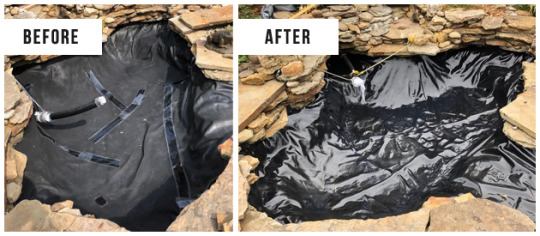
Repairing Leaks and Tears:
Clean and Dry: Start by draining the pond and thoroughly cleaning the affected area. Remove any debris or algae that may impede the repair process. Ensure the surface is dry before proceeding.
Patching: Apply an EPDM pond liner patch over the tear or leak, ensuring a tight seal. Press down firmly to eliminate air bubbles and promote adhesion. For larger tears, consider using a patch larger than the damaged area for added reinforcement.
Sealing: To prevent future leaks, apply a fish pond coating over the patched area. This additional layer adds an extra barrier against water infiltration and enhances the longevity of the repair.
Preventive Maintenance Tips:
Regular Inspections: Schedule routine inspections of your pond to catch any potential issues early on. Look for signs of wear and tear, especially in high-traffic areas or around protruding objects.
Protective Measures: Minimize the risk of damage by installing protective measures such as pond underlayment or padding beneath rocks and decorations.
Water Quality Management: Maintain optimal water quality to reduce the likelihood of liner degradation. Proper filtration, aeration, and regular water testing are essential for a healthy pond environment.
Conclusion:
With the right knowledge and materials, fix pond liners can be a straightforward task. By investing in quality products like EPDM pond liners and coatings, you'll ensure a durable and reliable repair that stands the test of time. Remember to conduct regular inspections and practice preventive maintenance to keep your pond in pristine condition. With these tips in hand, you'll be well-equipped to tackle any pond liner challenges that come your way.
0 notes
Text
How to Repair Your Pond Liner Easily: A Quick Guide
Imagine your peaceful backyard pond, where fish swim and flowers sway. But then, a hole in the pond liner appears! No need to worry. Our guide will help you fix it easily. We'll show you how to patch up holes and stop leaks. Soon, your pond will be beautiful again. Let's start fixing it together!
Understanding EPDM Pond Liner Damage
Ever wonder what happens when your EPDM pond liner gets damaged? Let's break it down. Your pond liner, made of EPDM, can face some troubles. Small holes can form from sharp objects or wear and tear over time. These holes lead to leaks, making your pond lose water. But don't worry! We'll show you how to spot and fix these issues in no time.
Essential Tools for DIY Pond Liner Repair
Ready to fix pond liner? Here's what you'll need:
Patch Material: This could be a piece of EPDM liner or a specialized patch kit.
Scissors: For cutting patch material to size.
Cleaning Supplies: Grab a scrub brush and some mild soap to clean the damaged area.
Primer: A primer helps the patch adhere to the liner.
Seam Roller: This tool ensures a tight bond between the patch and the liner.
Gloves: Protect your hands from any chemicals used during the repair.
Safety Glasses: Keep your eyes safe while working with sharp tools.
With these tools in hand, you're all set to tackle your DIY pond liner repair!
Step-by-Step Guide to Fix Pond Liner Tears
Let's fix those tears in your pond liner step by step:
Inspect the Damage: First, carefully examine your pond liner to locate any tears or holes. Look closely along seams and areas where the liner may have been damaged by rocks or roots.
Clean the Area: Use a scrub brush and mild soap to clean the damaged area. Remove any debris, algae, or dirt that might prevent the patch from adhering properly.
Cut the Patch Material: Measure the size of the tear and cut a piece of patch material slightly larger than the damaged area. You can use a piece of EPDM liner or a specialized patch kit for this.
Apply Primer: Apply a thin layer of primer around the edges of the tear and on the back of the patch material. This will help the patch adhere securely to the liner.
Position the Patch: Carefully place the patch over the tear, ensuring that it covers the damaged area completely. Smooth out any wrinkles or air bubbles to ensure a tight seal.
Press and Seal: Use a seam roller to firmly press the patch onto the liner, ensuring a strong bond. Work from the center of the patch outwards to remove any trapped air.
Allow to Cure: Let the patch dry and cure according to the instructions provided with the patch material. This usually takes a few hours to fully set.
Inspect and Fill: Once the patch is dry, inspect the repaired area to ensure that it's fully sealed. Then, refill your pond with water and monitor for any leaks.
By following these steps, you can effectively repair tears in your pond liner and restore your pond to its natural beauty.
Choosing the Right Pond Liner Material for Repair
Selecting the correct pond liner material for your repair is crucial. Here's how to choose:
EPDM: EPDM (Ethylene Propylene Diene Monomer) is a popular choice for pond liners. It's durable, flexible, and resistant to UV rays and harsh weather. If your pond originally had an EPDM liner, it's best to stick with the same material for repairs to ensure compatibility.
PVC: PVC (Polyvinyl Chloride) liners are another option. They are less expensive than EPDM and still offer good durability and flexibility. PVC liners are suitable for smaller ponds and are easier to install.
HDPE: High-Density Polyethylene (HDPE) liners are known for their puncture resistance and longevity. They are thicker and heavier than other liners, making them ideal for larger ponds or areas with rough terrain.
Rubber: Rubber liners, such as Butyl rubber, offer similar properties to EPDM but may vary in terms of flexibility and longevity. They are suitable for ponds of all sizes but may be more expensive than other options.
Consider Patch Kits: Many manufacturers offer patch kits specifically designed for repairing pond liners. These kits often include patches made of the same material as your liner, along with adhesive and primer for a secure bond.
When choosing a pond liner material for repair, consider factors such as the size of your pond, budget, durability, and compatibility with your existing liner. Always follow manufacturer recommendations and instructions for the best results.
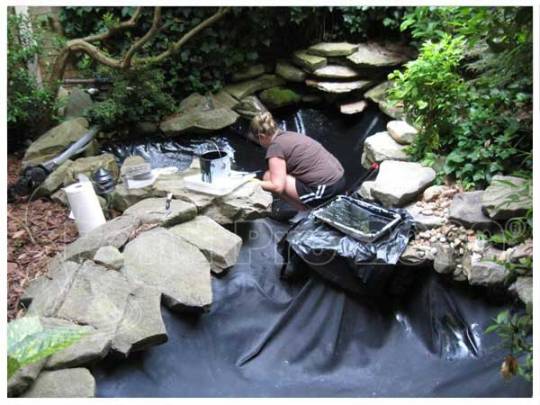
Exploring Effective Pond Coatings for Long-Term Protection
When it comes to protecting your pond for the long term, the right pond coatings is essential. Here are some effective options to consider:
Epoxy Coatings: Epoxy coatings provide a durable and waterproof barrier for your pond. They are resistant to chemicals, UV rays, and abrasion, making them ideal for ponds with high traffic or exposure to harsh elements.
Polyurethane Coatings: Polyurethane coatings offer excellent flexibility and resistance to water and chemicals. They can withstand temperature fluctuations and are suitable for both indoor and outdoor ponds.
Acrylic Sealants: Acrylic sealants provide a clear, protective layer over the pond surface. They are easy to apply and dry quickly, forming a tough barrier against water and UV damage.
Rubberized Coatings: Rubberized coatings, such as liquid rubber or neoprene, create a flexible and waterproof membrane over the pond liner. They are ideal for repairing small leaks or reinforcing weak spots in the liner.
Fiberglass Reinforced Coatings: Fiberglass reinforced coatings combine the strength of fiberglass with the waterproof properties of resin. They create a seamless and durable surface that can withstand heavy use and extreme weather conditions.
Pond Liner Overlays: If your existing pond liner is damaged or deteriorating, consider adding a new layer of pond liner as an overlay. This provides an extra layer of protection and can extend the life of your pond.
When choosing a pond coating, consider factors such as the size and type of your pond, budget, and the level of protection required. It's also important to properly prepare the surface and follow manufacturer instructions for application to ensure the best results and long-term protection of your pond.
Pro Tips for Maintaining Your Pond Liner Integrity
Maintaining the integrity of your pond liner is key to a healthy and beautiful pond. Here are some pro tips to help you keep your pond liner in top condition:
Regular Inspections: Schedule regular inspections of your pond liner to check for any signs of damage, such as tears, punctures, or wear and tear. Catching issues early can prevent them from becoming larger problems down the line.
Remove Debris: Keep your pond free of debris such as leaves, branches, and rocks, as these can puncture or damage the liner over time. Use a net or skimmer to remove debris regularly.
Protect Against UV Exposure: UV rays can weaken and degrade pond liners over time. Consider adding shading with plants, trees, or shade sails to protect your liner from excessive sun exposure.
Avoid Sharp Objects: Be mindful of sharp objects near your pond, such as tools, toys, or decorative rocks. Keep these items away from the pond edge to prevent accidental damage to the liner.
Use Protective Underlay: Install a protective underlay beneath your pond liner to provide an extra layer of cushioning and protection against sharp objects or uneven surfaces.
Proper Water Level: Maintain a consistent water level in your pond to prevent stress on the liner. Avoid overfilling or allowing the water level to drop too low, which can cause the liner to stretch or tear.
Monitor Water Quality: Keep an eye on water quality parameters such as pH, ammonia, and nitrate levels. Poor water quality can weaken the liner and lead to deterioration over time.
Address Leaks Promptly: If you notice any leaks or damage to your pond liner, address them promptly to prevent further issues. Patch small tears or punctures using a patch kit or sealant designed for your liner material.
By following these pro tips for maintaining your pond liner integrity, you can prolong the life of your liner and enjoy a beautiful and healthy pond for years to come.
Conclusion
Maintaining the integrity of your pond liner is essential for the longevity and health of your pond. By following the pro tips outlined above, including regular inspections, debris removal, UV protection, avoiding sharp objects, using protective underlay, maintaining proper water levels, monitoring water quality, and addressing leaks promptly, you can ensure that your pond liner remains in top condition.
Remember, a well-maintained pond liner not only protects your investment but also provides a safe and beautiful habitat for aquatic life. With a little care and attention, you can enjoy the tranquility and beauty of your pond for years to come. So, roll up your sleeves, implement these tips, and watch your pond thrive!
0 notes
Text
Essential Guide to Pond Liners: Choosing the Right Material for Your Pond
Imagine you're creating your own special pond. Picking the right liner for it is super important. In this guide, we'll help you understand all about pond liners, so your pond stays awesome for a long time. From making your backyard pond look amazing to keeping the creatures in it happy, choosing the right liner matters a lot. Let's dive in and learn all about it together!
Understanding Pond Liners: A Comprehensive Overview
Welcome to our complete guide about pond liners! Whether you're new to ponds or already love them, understanding pond liners is really important for making a great pond. In this guide, we'll explain everything you need to know about pond liners. We'll talk about the different types of liners you can use, what's good about them, and what's not so good. We'll also help you figure out which one is best for your pond idea. Whether you're dreaming of a calm pond with fancy fish, a busy place full of plants and animals, or a big pond for farming or other jobs, picking the right liner is where it all starts. We'll walk you through all the steps, so you'll be ready to make your pond exactly how you want it. Let's start this adventure together and learn how to make your dream pond a reality!
Exploring Different Pond Liner Materials
Let's check out the various pond liner material! When it comes to making a pond, there are different options for what to use to keep the water in. Each material has its own strengths and weaknesses, so it's essential to understand them all. Here, we'll look at the most common ones:
PVC Liners: PVC liners are popular because they're affordable and easy to find. They're like giant, durable sheets of plastic that you can shape to fit your pond. While they're relatively inexpensive, they may not last as long as other materials and can be prone to punctures if not installed correctly.
EPDM Rubber Liners: EPDM liners are known for their flexibility and durability. They're made of a synthetic rubber material that can stretch and conform to the shape of your pond, making them ideal for irregularly shaped ponds or those with rocky bottoms. EPDM liners tend to be more expensive than PVC, but they often last longer and are less prone to damage.
Butyl Rubber Liners: Butyl rubber liners are similar to EPDM liners but are typically thicker and more resistant to UV radiation. They offer excellent flexibility and durability, making them suitable for a wide range of pond designs. However, they can be more costly than other options.
Each type of pond liner has its own unique characteristics and is suited to different pond designs and budgets. By understanding the pros and cons of each material, you can make an informed decision and choose the best liner for your specific needs. So, let's dive deeper into each option and discover which one is perfect for your pond project!
EPDM Liners: The Versatile Solution for Your Pond
Let's talk about EPDM liners! If you're looking for a versatile solution for your pond, EPDM liners might just be the perfect fit. These special liners are made of a synthetic rubber material called Ethylene Propylene Diene Monomer, but don't let the fancy name scare you. EPDM liners are known for their flexibility and durability, which means they can bend and stretch to fit the shape of your pond without tearing.
One of the great things about EPDM liners is their ability to withstand different weather conditions. Whether it's scorching hot or freezing cold, EPDM liners can handle it all. They're resistant to UV rays from the sun, so you don't have to worry about them breaking down and leaking over time. Plus, they're also fish and plant safe, so you can create a thriving ecosystem in your pond without any worries.
EPDM liners are perfect for ponds of all shapes and sizes. Whether you're building a small backyard pond or a large, elaborate water feature, EPDM liners can be custom-cut to fit your specific dimensions. They're also easy to install, so you can have your pond up and running in no time.
Another advantage of EPDM liners is their longevity. Unlike some other types of liners that may degrade over time, EPDM liners can last for decades with proper care and maintenance. This means you can enjoy your pond for years to come without having to worry about costly repairs or replacements.
EPDM liners offer a versatile and durable solution for ponds of all kinds. Their flexibility, weather resistance, and longevity make them an excellent choice for anyone looking to create a beautiful and long-lasting water feature. So why wait? Consider using EPDM liners for your pond project and watch your aquatic oasis come to life!
Liquid Rubber Pond Liners: A Flexible and Durable Choice
Let's talk about liquid rubber pond liner! If you're searching for a flexible and durable option for your pond, liquid rubber might just be the perfect solution. Unlike traditional pond liners that come in pre-formed sheets or rolls, liquid rubber is exactly what it sounds like: a liquid that can be applied directly to the surface of your pond and then cured to form a seamless, waterproof membrane.
One of the standout features of liquid rubber pond liners is their flexibility. Because they're applied as a liquid, they can conform to any shape or contour, whether your pond is round, square, or something in between. This makes them ideal for ponds with irregular shapes or uneven bottoms, where traditional liners may struggle to fit properly.
But flexibility isn't the only benefit of liquid rubber pond liners—they're also incredibly durable. Once cured, liquid rubber forms a tough, rubbery membrane that can withstand the rigors of outdoor exposure, including UV rays from the sun, fluctuating temperatures, and even the occasional visit from curious wildlife. This means you can enjoy your pond with confidence, knowing that your liner is up to the task.
Another advantage of liquid rubber pond liners is their ease of application. Unlike other types of liners that may require special tools or professional installation, liquid rubber can often be applied by the DIY enthusiast with just a few simple tools and a bit of elbow grease. Plus, because it's applied as a liquid, it can easily fill in cracks, seams, and other imperfections in your pond's surface, ensuring a watertight seal.
Liquid rubber pond liners offer a flexible, durable, and easy-to-install solution for ponds of all shapes and sizes. Their ability to conform to any contour, coupled with their resilience to the elements, makes them an excellent choice for anyone looking to create a beautiful and long-lasting water feature. So why not consider liquid rubber for your next pond project and experience the benefits for yourself?
Installation Tips for Pond Liners: Ensuring a Leak-Free Pond
Let's dive into some installation tips for pond liners to make sure your pond stays leak-free! Whether you're a beginner or a seasoned pond enthusiast, proper installation is crucial for the success of your water feature. Here are some essential tips to keep in mind:
Prepare the Pond Area: Before installing the liner, make sure the area where your pond will be located is clean and free of any sharp objects or debris that could puncture the liner. Remove rocks, roots, and other obstacles that could cause problems later on.
Choose the Right Size Liner: Measure your pond carefully and choose a liner that is slightly larger than the dimensions of your pond. This extra material will allow for proper coverage and overlap along the edges, ensuring a watertight seal.
Protect the Liner: To prevent damage during installation, consider placing a protective layer such as sand or old carpeting beneath the liner. This will cushion the liner and help prevent punctures from rocks or roots below.
Smooth Out Wrinkles: As you lay the liner into the pond, be sure to smooth out any wrinkles or folds to eliminate potential stress points that could lead to tears or leaks. Take your time and work carefully to ensure a smooth, even surface.
Secure the Edges: Once the liner is in place, secure the edges by using rocks, bricks, or other heavy objects to hold it in place temporarily. This will prevent the liner from shifting or moving during the filling process.
Consider Underlayment: If you're using a flexible liner such as EPDM or PVC, consider adding an underlayment beneath the liner for added protection. Underlayment materials like geotextile fabric or polyester felt can provide an extra layer of cushioning and help prevent punctures.
Fill the Pond Gradually: When filling your pond with water, do so slowly and gradually to allow the liner to settle into place. This will help prevent stress on the liner and ensure a proper fit. Be sure to smooth out any wrinkles or folds as the pond fills up.
Inspect for Leaks: Once the pond is filled, carefully inspect the liner for any signs of leaks or tears. Pay close attention to the seams, corners, and areas where the liner meets the edges of the pond. If you notice any issues, patch them promptly using a patch kit designed for your specific liner material.
By following these installation tips, you can ensure that your pond liner is properly installed and your pond remains leak-free for years to come. With a little planning and attention to detail, you can create a beautiful and functional water feature that brings joy and tranquility to your outdoor space.
Maintaining Your Pond Liner: Tips for Longevity and Durability
Maintaining your pond liner is essential for ensuring its longevity and durability. By taking proactive steps to care for your liner, you can extend its lifespan and keep your pond looking beautiful for years to come. Here are some tips to help you maintain your pond liner effectively:
Regular Inspection: Schedule regular inspections of your pond liner to check for any signs of wear, tear, or damage. Look for punctures, tears, or holes, especially along seams and edges. Catching problems early allows you to address them promptly and prevent further damage.
Keep It Clean: Regularly remove debris such as leaves, twigs, and algae from the surface of your pond to prevent them from accumulating and potentially causing damage to the liner. Use a pond skimmer or net to skim the surface and a pond vacuum to clean the bottom.
Monitor Water Quality: Maintain proper water quality in your pond to prevent algae growth and other issues that can degrade the liner. Test the water regularly for pH, ammonia, nitrite, and nitrate levels, and make adjustments as needed to keep them within the optimal range for your aquatic plants and fish.
Protect Against UV Damage: Over time, exposure to sunlight can cause pond liners to deteriorate. Consider shading your pond with plants, trees, or a shade sail to protect the liner from UV rays. If shading is not possible, apply a UV-resistant coating or cover the liner with rocks or gravel to provide additional protection.
Prevent Freezing Damage: In colder climates, freezing temperatures can cause pond liners to crack or become brittle. To prevent damage, consider installing a pond heater or de-icer to keep a small area of the pond surface ice-free during the winter months. Alternatively, you can drain and store your pond pump and filter indoors until spring.
Address Leaks Promptly: If you notice any leaks or damage to your pond liner during inspections, address them promptly to prevent further issues. Use a patch kit designed for your specific liner material to repair small tears or holes. For larger repairs, consider consulting a professional pond contractor for assistance.
Avoid Sharp Objects: Be mindful of sharp objects such as rocks, roots, and gardening tools near your pond to prevent accidental damage to the liner. Install a protective barrier or edge around the perimeter of the pond to keep these hazards at bay.
Proper Winterization: Before winter arrives, take steps to properly winterize your pond to protect the liner from freezing temperatures and ice damage. Remove any delicate plants or fish and trim back overhanging vegetation. Consider covering the pond with a net or pond netting to catch falling leaves and debris.
By following these maintenance tips, you can ensure that your pond liner remains in top condition and provides years of enjoyment for you and your family. With proper care and attention, your pond can continue to thrive as a beautiful and tranquil oasis in your backyard landscape.
Conclusion
Maintaining your pond liner is vital for preserving its longevity and ensuring the health and beauty of your pond ecosystem. By following the maintenance tips outlined above, you can protect your liner from damage, extend its lifespan, and enjoy a leak-free pond for years to come.
Regular inspections, proper cleaning, and monitoring of water quality are essential tasks that should be incorporated into your routine pond maintenance schedule. Addressing any issues promptly can prevent small problems from escalating into larger, more costly repairs down the line.
Protecting your pond liner from UV damage, freezing temperatures, and sharp objects will help preserve its integrity and structural integrity. Taking proactive steps to winterize your pond and avoid potential hazards can prevent damage and prolong the life of your liner.
Remember, a well-maintained pond liner is the foundation of a healthy and vibrant pond ecosystem. By investing time and effort into caring for your liner, you can create a beautiful outdoor space that brings joy and tranquility to your life for years to come. So, roll up your sleeves, get out there, and enjoy the beauty of your pond oasis!
0 notes
Text
All About Pond Liners: How to Pick, Fix, and Keep Your Pond Safe
Creating a beautiful pond in your backyard starts with picking the right liner. It's like building a strong base for your water paradise. In this guide, we'll help you choose the best liner, fix any problems that pop up, and keep your pond safe for a long time. Let's explore together how to make your garden a peaceful retreat where you can relax and enjoy nature.
Understanding Pond Liners: A Comprehensive Overview
Welcome to the world of pond liners! If you're dreaming of a serene pond in your garden, you're in the right place. In this guide, we'll take a deep dive into everything you need to know about pond liners. From what they are to how to choose the right one, we've got you covered. So, let's get started on your journey to creating the perfect aquatic paradise!
Rubber Pond Coating: The Ultimate Solution for Pond Liners
Discover the secret to a perfect pond with rubber pond coating! If you're looking for the ultimate solution for your pond liners, you've come to the right spot. In this guide, we'll explore why rubber pond coating stands out as the best choice. Get ready to unlock the key to a durable and beautiful pond that will bring joy for years to come!
Patching Pond Liners: Quick Fixes for Common Issues
Got a leak in your pond liner? No worries! We've got you covered with quick fixes for common issues. In this guide, we'll show you how to patch up those pesky leaks and keep your pond in top shape. Say goodbye to worries and hello to a watertight oasis!
Exploring Pond Liner Materials: What Works Best for Your Pond?
Let's dive into the world of pond liner materials! If you're wondering what works best for your pond, you're in the right place. In this guide, we'll explore different materials and help you find the perfect fit for your aquatic paradise. Get ready to discover the secrets to a durable and beautiful pond liner!
DIY Pond Liner Repair: Simple Steps for a Leak-Free Pond
Ready to tackle that pesky leak in your pond? With our simple DIY pond liner repair guide, you'll have your oasis back in no time! We'll walk you through easy steps to fix leaks and ensure your pond stays leak-free. Say goodbye to worries and hello to a pristine pond paradise!
Maintenance Tips for Longevity: Keeping Your Pond Liner in Top Condition
Want to keep your pond liner in tip-top shape for years to come? It's easier than you think! In this guide, we'll share some simple maintenance tips to help you maintain the longevity of your pond liner. With just a little TLC, you can ensure your aquatic paradise stays beautiful and leak-free for years to come.
Environmental Benefits of Proper Pond Liner Care: Why It Matters
Ever wondered why taking care of your pond liner is so important? Let's talk about the environmental benefits! By properly maintaining your pond liner, you're not just keeping your aquatic haven in top shape – you're also helping the environment thrive. In this guide, we'll explore why proper pond liner care matters and how it can make a positive impact on your surroundings. Get ready to dive into a world where your actions create a healthier ecosystem for all.
How to Select the Perfect Pond Liner for Your Needs
Choosing the right pond liner is key to creating your dream water feature. But with so many options out there, where do you start? Don't worry, we've got you covered! In this guide, we'll walk you through the steps to selecting the perfect pond liner for your needs. From size and material to budget and durability, we'll help you make an informed decision so you can enjoy your pond for years to come. Let's get started on creating your aquatic paradise!
Conclusion:
Creating and maintaining a beautiful pond is within reach for anyone with the right knowledge and tools. We've explored the importance of selecting the right pond liner, the benefits of proper care, and the environmental impact of our actions. Whether you're embarking on a DIY project or seeking professional assistance, remember that with attention to detail and regular maintenance, your pond can be a source of joy and tranquility for years to come. So go ahead, take the plunge, and enjoy the wonders of your very own aquatic oasis!
0 notes
Text
The Ultimate Guide to Fixing Pond Liner Leaks with EPDM Material
Are you tired of dealing with pesky leaks in your pond? Don't worry, we've got the perfect solution for you! In this comprehensive guide, we'll walk you through the simple steps to fix pond liner issues using high-quality EPDM pond liner material.
Understanding the Problem:
Leaky ponds can lead to a host of problems, from water loss to potential damage to your garden or landscape. The key to solving these issues lies in a well-maintained pond liner. If you're noticing leaks or wear and tear, it's time to take action.
Choosing the Right Material:
EPDM (Ethylene Propylene Diene Monomer) pond liner material is your go-to solution. Known for its durability and flexibility, EPDM is a synthetic rubber that can withstand the harsh elements and provide a long-lasting solution to your pond liner problems.
Step-by-Step Guide to Fix Pond Liner:
Identify the Leak:
Start by locating the source of the leak in your pond. Look for any visible tears, punctures, or weak points in the liner.
Clean and Prepare:
Before applying the EPDM pond liner material, ensure that the affected area is clean and free of debris. A thorough cleaning will enhance the bonding process.
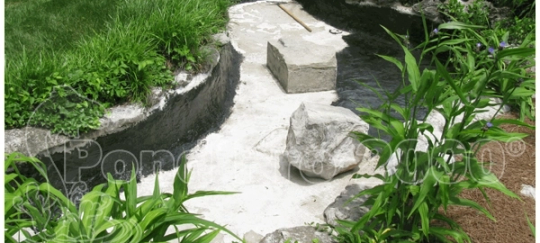
Apply EPDM Pond Liner Material:
Cut the EPDM material to cover the damaged area with a generous overlap. Apply an adhesive designed for EPDM bonding and press the material firmly onto the affected section.
Seal and Cure:
After applying the EPDM pond liner material, ensure a proper seal by pressing down and smoothing out any air bubbles. Allow the adhesive to cure according to the manufacturer's instructions.
Inspect and Fill:
Once the repair is complete, inspect the entire pond liner for any additional issues. Once satisfied, refill your pond and monitor for any further leaks.
Conclusion:
With this easy-to-follow guide, you can bid farewell to those frustrating pond leaks. By utilizing the power of EPDM pond liner material, you're not just fixing the problem; you're ensuring the longevity of your pond. Follow these steps, and you'll have a watertight pond ready to enhance the beauty of your landscape. Happy pond-keeping!
0 notes
Text
A Guide to Pond Liners: Fixing, Coatings, and Why EPDM Liners Are Your Best Choice
Ponds bring serenity and beauty to any outdoor space, but ensuring their longevity requires attention to crucial details, with the pond liner being a key element. In this guide, we'll explore essential tips on fixing pond liners, the importance of pond coatings, and why EPDM liners stand out as the optimal choice.
Fixing Pond Liners
One of the common challenges pond owners face is dealing with leaks or damages in their pond liners. To fix pond liners, start by carefully examining the entire surface. Look for visible tears, punctures, or areas of wear and assess the extent of the damage. Once identified, follow these simple steps to address the issue:
Clean the Area: Remove any debris or aquatic plants surrounding the damaged spot.
Patch it Up: Utilize a suitable pond liner patch kit to cover small punctures. For larger tears, consider using a pond liner sealant for a more robust solution.
Prevention is Key: Regularly inspect your pond liner and address any issues promptly to prevent further damage.
Importance of Pond Coatings
To enhance the durability and longevity of your pond liner, consider applying pond coatings. These coatings act as an additional layer of protection, safeguarding your liner against UV rays, weathering, and potential punctures. Here's why pond coatings should be a part of your pond maintenance routine:
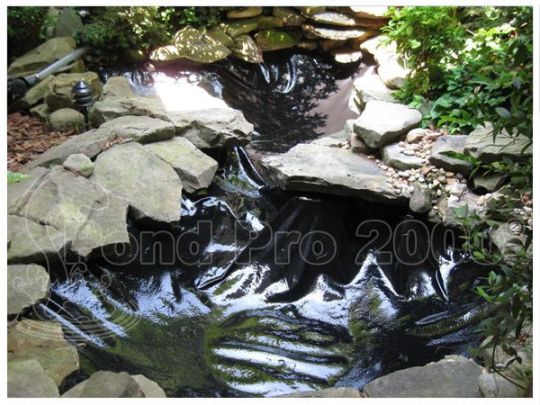
UV Protection: Pond coatings shield the liner from harmful UV rays, preventing degradation over time.
Weather Resistance: Coatings provide a barrier against harsh weather conditions, ensuring your pond remains resilient in all seasons.
Enhanced Lifespan: A coated pond liner is less susceptible to wear and tear, ultimately extending its lifespan.
The Advantages of EPDM Liners
When it comes to selecting a pond liner, EPDM liners stand out for their exceptional qualities. EPDM, or ethylene propylene diene monomer, is a synthetic rubber that offers unmatched benefits for pond owners:
Flexibility: EPDM liners are highly flexible, conforming to the shape of your pond seamlessly.
Durability: Resistant to UV rays and extreme temperatures, EPDM liners boast a long lifespan.
Environmentally Friendly: EPDM is non-toxic and safe for aquatic life, ensuring a healthy ecosystem in your pond.
Conclusion: Maintaining a healthy and vibrant pond involves addressing the fundamental aspects of pond liners. By understanding how to fix pond liners, the importance of pond coatings, and the advantages of EPDM liners, you can create a sustainable and thriving aquatic environment right in your backyard. Consider these tips as you embark on your journey to a well-maintained and picturesque pond.
0 notes
Text
Unveiling the Magic of EPDM Liners for Pond Perfection
If you're a pond enthusiast, you're likely familiar with the importance of a reliable liner to ensure the longevity and health of your aquatic haven. In the realm of pond liners, one material stands out – EPDM liners. Let's dive into the world of EPDM liners and discover why they are the go-to choice for pond enthusiasts.
Understanding EPDM Liners
EPDM liners have gained immense popularity in the world of pond construction and maintenance. Their composition of synthetic rubber, derived from ethylene and propylene, grants them unique properties that make them ideal for various applications, including pond construction.
Durability Beyond Compare
One of the primary reasons EPDM Pond liners are preferred is their exceptional durability. These liners can withstand harsh weather conditions, UV rays, and temperature fluctuations without losing their structural integrity. This resilience ensures that your pond remains leak-free and resistant to wear and tear, providing a long-lasting solution for your aquatic oasis.
Repair Pond Liners with Ease
EPDM liners offer a convenient solution for pond enthusiasts facing liner damage. If you encounter issues such as punctures or tears, worry not – repairing EPDM liners is a straightforward process. Specialized repair kits are available, containing everything you need to repair pond liners efficiently. Whether it's a minor puncture or a more significant tear, EPDM liners make the repair process hassle-free.
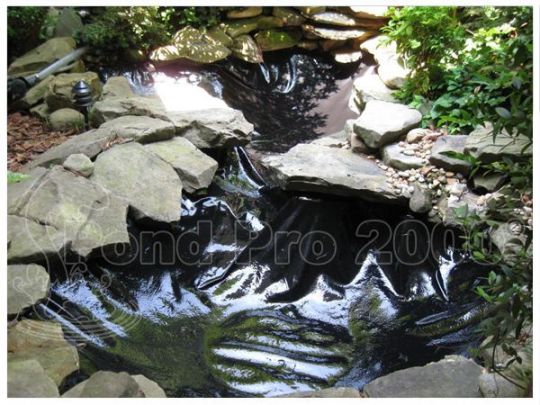
The Fix Pond Liner Advantage
EPDM liners not only excel in durability but also in flexibility. Their pliability allows for easy installation, conforming to the contours of your pond with minimal effort. This flexibility extends to repairs as well. When you need to fix pond liner, EPDM's malleability ensures a seamless patching process, maintaining the structural integrity of your pond.
Choosing the Right Pond Liner Material
When selecting a pond liner material, it's crucial to consider factors such as durability, flexibility, and ease of repair. EPDM liners check all these boxes, making them an excellent choice for pond enthusiasts. Their proven track record in pond construction and maintenance speaks volumes about their reliability and effectiveness.
Conclusion
In conclusion, if you're aiming for a pond that stands the test of time, investing in an EPDM liner is a wise choice. From withstanding the elements to providing easy solutions for repair, these liners ensure that your pond remains a thriving ecosystem for years to come.
0 notes
Text
Choosing the Right Pond Liner Material: A Guide to EPDM Pond Liners and Coatings
When it comes to creating a thriving and long-lasting pond, the choice of pond liner material is crucial. In this guide, we'll explore the ins and outs of pond liners, with a focus on two key aspects: EPDM pond liners and pond coatings.
Understanding Pond Liners:
Pond liners serve as the foundation for your aquatic haven, preventing leaks and providing a secure environment for aquatic life. Among the various materials available, EPDM (Ethylene Propylene Diene Monomer) stands out for its durability, flexibility, and suitability for various pond designs.
EPDM Pond Liners:
EPDM pond liners are a popular choice for both amateur pond enthusiasts and professional landscapers. Their high flexibility allows for easy installation in ponds of different shapes and sizes. EPDM is also known for its resistance to UV rays and temperature extremes, ensuring longevity even in challenging weather conditions.
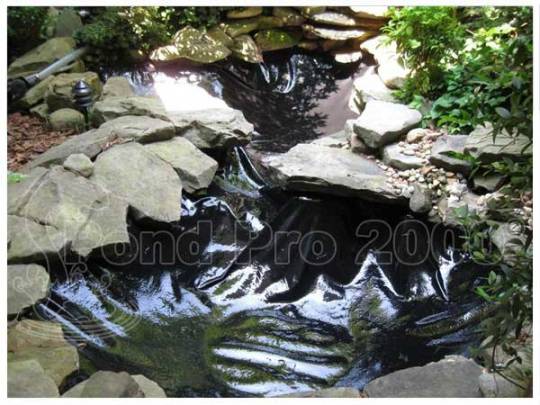
Pond Coatings for Added Protection:
To enhance the performance and lifespan of your pond liner, consider applying specialized pond coatings. These coatings act as an additional layer of protection, guarding against punctures, UV damage, and potential wear and tear over time. When choosing pond coatings, ensure compatibility with your selected liner material for optimal results.
Factors to Consider:
Pond Size and Design:
Tailor your choice of pond liner material to fit the specific design and size of your pond.
Climate Considerations:
EPDM pond liners are known for their ability to withstand various climates, making them suitable for both hot and cold regions.
Installation Tips:
Seek professional advice or follow manufacturer guidelines for proper installation, ensuring a watertight seal.
Conclusion:
Investing in the right pond liner material is fundamental to the success of your aquatic project. Whether you opt for the flexibility of EPDM pond liners or enhance protection with specialized coatings, a well-thought-out choice will contribute to the longevity and beauty of your pond.
0 notes
Text
The Essential Guide to Pond Liners: Fish Pond Coating, Patching Pond Liners, and EPDM Pond Liners
Pond liners are a critical component of any successful pond construction project. Whether you want to make a peaceful koi pond or an energetic water garden, grasping the subtleties of pond liners, for example, fish pond coating, patching pond liners, and EPDM pond liners, is fundamental for guaranteeing the life span and respectability of your sea-going shelter. We will dive into the universe of pond liners and investigate how these components assume a urgent part in your lake's wellbeing and usefulness.
The Significance of Picking the Right Lake Liner
When embarking on a pond project, the choice of pond liner is paramount. There are different choices accessible, however three stick out: fish pond coating, patching pond liners, and EPDM pond liners. How about we dive further into every one of these decisions to assist you with settling on an educated choice.
Fish Pond Coating - A Versatile Option
Fish pond coating, otherwise called Lake Sealant, is a flexible choice for pond development. It gives a tough, waterproof hindrance that keeps water from saturating the dirt. Fish pond coatings are particularly well known among Do-It-Yourself lake devotees because of their simplicity of use and reasonableness.
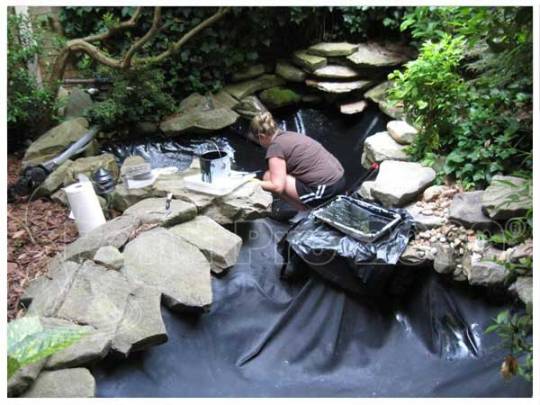
Patching Pond Liners - Repairing Your Investment
Over time, pond liners may develop leaks or tears, leading to water loss and potential damage to your pond ecosystem. That's where patching pond liners come into play. Learn how to identify and repair common liner issues, ensuring your pond remains watertight and thriving.
EPDM Pond Liners - The Gold Standard
EPDM (Ethylene Propylene Diene Monomer) pond liners have gained a reputation as the gold standard in pond liner technology. They are known for their exceptional durability, flexibility, and resistance to UV rays. Discover why many professional pond builders and enthusiasts prefer EPDM pond liners for their longevity and reliability.
Maintaining Your Pond Liner
Maintaining your pond liner is crucial for the health of your aquatic ecosystem. Learn best practices for cleaning, inspecting, and preserving your chosen liner type to ensure your pond remains a vibrant and thriving habitat.
Conclusion
Choosing the right pond liner is a critical step in creating and maintaining a healthy pond environment. Whether you opt for fish pond coating, need to patch an existing liner, or invest in the durability of EPDM pond liners, your choice will impact the success of your pond project. By understanding these options and optimizing your selection, you can create a beautiful and sustainable pond that will provide enjoyment for years to come.
youtube
0 notes
Text
Choosing the Right Pond Liner for a Leaks-free Water Paradise
Have you at any point longed for having a tranquil and beautiful fish pond in your terrace? A very much kept up with pond can be a lovely expansion to your outside space, offering peacefulness and a dash of nature to your home. Nonetheless, one of the fundamental parts of a solid pond is the pond liner. We'll dive deep into the world of pond liners, focusing on fish pond coating, fix pond liners, and exploring the benefits of EPDM pond liners.
Fish Pond Coating: Ensuring a Durable Foundation:
Fish pond coating is the first line of defense against leaks and water seepage. The right coating can make a significant difference in the longevity and performance of your pond. When choosing a coating, consider factors like durability, flexibility, and resistance to UV rays. EPDM (ethylene propylene dyne terpolymer) pond liners are an excellent choice for fish ponds due to their outstanding durability and resistance to weathering.
Fixing Pond Liners: Addressing Common Issues:
Over time, pond liners can develop wear and tear, leading to leaks and water loss. It's essential to address these issues promptly to maintain a healthy pond environment. Common problems include punctures, tears, and wrinkles in the liner. To fix pond liners, start by identifying the source of the problem. Patching kits and sealants can be used for smaller issues, while larger tears may require liner replacement. Regular inspections and maintenance can prevent these problems from escalating.
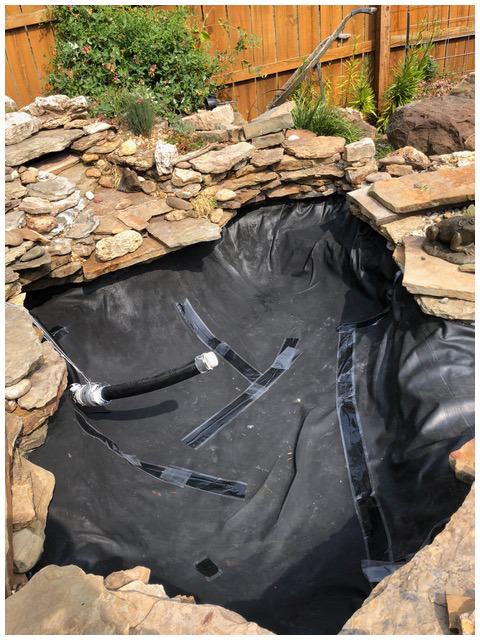
EPDM Pond Liners: A Premium Choice:
EPDM pond liners have gained popularity among pond enthusiasts for several reasons. They are known for their exceptional durability and resistance to UV radiation, making them an excellent choice for long-term pond projects. EPDM liners are also highly flexible, allowing for easy installation in various pond shapes and sizes. Their high elasticity prevents cracks and tears, providing peace of mind for pond owners.
Benefits of EPDM Pond Liners:
Durability: EPDM pond liners can last for decades, ensuring a low-maintenance pond experience.
UV Resistance: They can withstand prolonged exposure to sunlight without degrading.
Flexibility: EPDM liners can conform to the contours of your pond, reducing the risk of leaks.
Eco-Friendly: EPDM is an environmentally friendly material, safe for aquatic life.
Easy Installation: Their flexibility simplifies installation, even for complex pond designs.
Conclusion:
Investing in the right pond liner, such as EPDM, is crucial for maintaining a beautiful and leak-free pond. Fish pond coating and prompt attention to fixes are equally important to ensure your pond's longevity. With the proper care and choice of materials, your backyard water paradise can provide years of enjoyment and relaxation.
Remember to regularly inspect your pond liner, especially if you notice any issues, and consider using EPDM pond liners for a durable and eco-friendly pond solution. Enjoy your beautiful pond and the serenity it brings to your outdoor space.
youtube
1 note
·
View note
Text
Repairing Pond Leaks During Summer
Repairing pond leaks during the summer can be challenging, as the high temperatures and evaporation rates can make it difficult to keep water levels stable. Here are some tips for repairing pond leaks during the summer:
Identify the source of the leak: Before you can repair the leak, you need to know where it is located. Look for obvious signs of damage, such as cracks or punctures in the pond liner or visible leaks around the edges of the pond.
Determine the extent of the damage: Once you have identified the source of the leak, you need to assess the extent of the damage. If the leak is small, you may be able to repair it using a sealant or patch. If the damage is more extensive, you may need to replace the pond liner or make more significant repairs.

Lower the water level: To make repairs, you will need to lower the water level in the pond. However, in the summer, it's essential to keep the water level as stable as possible to prevent evaporation. Consider using a temporary water source, such as a garden hose, to keep the water level stable while you make repairs.
Use a compatible sealant: When repairing pond leaks, make sure to use a sealant that is compatible with your pond liner material. For example, if you have a rubber pond liner, choose a sealant that is specifically designed for rubber.
Follow the manufacturer's instructions: Always follow the manufacturer's instructions carefully when applying sealant or making repairs to your pond. Be sure to allow the sealant to dry completely before refilling the pond.
Overall, it's important to act quickly to repair pond leaks to prevent further damage to your pond and the surrounding ecosystem. By identifying the source of the leak, assessing the damage, and using a compatible sealant, you can successfully repair pond leaks during the summer.
youtube
0 notes
Text
Selecting the Best Pond Liner
There are several types of pond liners available on the market, and the best one for you will depend on your specific needs and requirements. Here are some of the most commonly used pond liner materials:
EPDM (Ethylene Propylene Diane Monomer): EPDM is a highly durable and flexible synthetic rubber that is commonly used for pond liners. It is resistant to UV rays, weathering, and tearing, making it a popular choice for both residential and commercial pond applications.
PVC (Polyvinyl Chloride): PVC is a popular choice for pond liners due to its affordability and ease of installation. It is a flexible, plastic material that is resistant to UV rays, punctures, and tears.
Polyethylene: Polyethylene is a lightweight and flexible material that is commonly used for small, shallow ponds. It is easy to install and is available in a variety of thicknesses.
Butyl Rubber: Butyl rubber is a highly durable and flexible material that is resistant to UV rays, weathering, and punctures. It is a popular choice for large, commercial ponds due to its strength and longevity.
When choosing a pond liner, it's important to consider factors such as durability, flexibility, and UV resistance. You should also choose a material that is suitable for the size and shape of your pond, as well as the types of plants and fish that will be living in the pond. Be sure to read the manufacturer's instructions carefully.
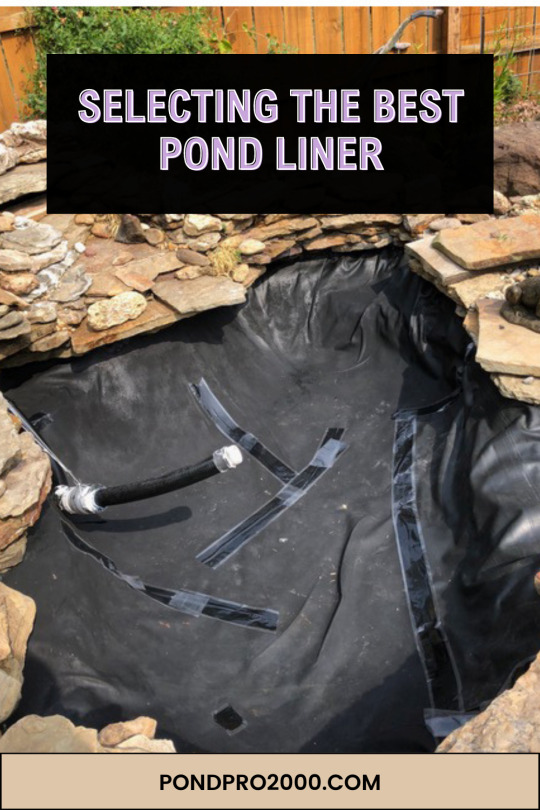
Why Pond Pro 2000?
Pond Pro 2000 has good customer reviews and success stories. Pond Pro 2000 is a liquid butyl rubber pond liner that is designed to provide a durable and long-lasting solution for pond repair and waterproofing. Here are some reasons why Pond Pro 2000 may be a good choice for your pond:
Durability: Pond Pro 2000 is made from a butyl rubber that is highly durable and resistant to UV rays, weathering, and punctures. It can withstand extreme temperatures and remains flexible even in cold weather, making it a good choice for ponds located in harsh climates.
Easy to apply: Pond Pro 2000 is a liquid liner that can be easily applied to any size or shape of pond using a brush or roller. It can also be sprayed on using a specialized sprayer. This makes it a convenient and cost-effective solution for pond repairs and waterproofing.
Versatile: Pond Pro 2000 can be used on a variety of surfaces, including concrete, wood, and metal. It is also safe for fish and plants, making it a good choice for ponds that contain aquatic life.
Long-lasting: Pond Pro 2000 is designed to provide long-lasting protection against leaks and other types of damage. It has a lifespan of up to 10-15 years, which makes it a cost-effective solution in the long run.
Warranty: Pond Pro 2000 comes with a 5-year manufacturer's warranty, which provides added peace of mind and protection against product defects.
Overall, Pond Pro 2000 is a high-quality, reliable and best pond liner that offers several advantages over other types of pond liners. If you are looking for a durable and long-lasting solution for your pond, Pond Pro 2000 may be a good choice for you.
youtube
0 notes
Text
Why should we Fix Pond Ponds with Pond Pro 2000?
When you do notice a pond make sure that it's repaired by a specialist or Pond Liner Products. Look for a product which is eco friendly, long lasting and cost effective. This can stand with temperature changes, must be easy to apply .with these quality claims many products are in market and proven 50 % wrong with reliability of market and durability of performance EPDM Pond Liner is here which withstand temperatures from -62° to 350° F ,One coat application, No primer required ,Easy Application and a true do-it-yourself product, lasts up to 3 times longer. Safe for fish and plant life, EPDM liner unlike other pond sealants is 100% epdm rubber in liquid form and guaranteed to repair leaks for long time of more than ten years.
0 notes
Text
Renovating Leaky Ponds
If you are certain that the only real leak is near the dam, you may use a smaller amount of Pond Liner do a spot application. (Note, however, that though you see water escaping alone at all-time low of the dam, it's still getable that the complete bottom layer is unseaworthy and flowing toward the dam.) Small, well-localized oozing points are also sealed with EPDM liner. It is a cost effective and long lasting solution .
0 notes
Text
EPDM Coatings support to HVAC system
There are a unit varied initiatives which could facilitate improve the energy efficiency of heating, ventilation and air conditioning. EPDMsystem can reduce air-conditioning costs without sacrificing durability of the roofing system.
0 notes
Text
Common Problems of fish in pond and their solution
Pond liner is product of EPDM and all products are eco friendly, useful in their job but harmless to water life. They are not only treat leaks and damages but also become hindrance to get them back and fungus and algae to grow.
0 notes
Text
Fixing a Leaking Pond is not difficult
Pond leaks are trail of patience. Water level dropping means certainly have to face repairing pool. Before panic, build completely certain it's a leaky liner and not another cringe. Check your water, check your hoses, and check your spitters. Flip your pump off, make full your pool. Watch it nightlong. The first issue you'd prefer to try and to be using that leaks at intervals the liner
0 notes